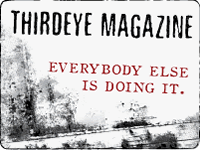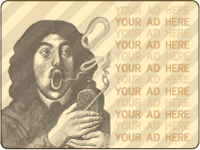
“Here in my car / I feel safest of all / I can lock all my doors / It’s the only way to live / In cars…” -Gary Numan
Cars, cars, everywhere. From the shores of Hawaii to the mountains of New Mexico to the hamlets of northern Michigan, cars and trucks of all shapes and sizes, running rampant down the streets, possessing highways, monopolizing avenues, pompously pushing their way down lanes, drives, places, and boulevards. Running over pedestrians, bicyclists, and each other. Belching carbon dioxide, spewing oil, gluttonously guzzling gasoline, shedding rubber, metal, glass, and plastic. Shrieking, rumbling and carelessly careening in various directions at multiple speeds.
They demand – greedily – gas stations, car dealerships, car wash facilities, oil and quick lube stations, parts stores, mechanic shops, manned fast-food posts, cheap motels, junkyards, strip malls, highways, byways, freeways, and interstates. And they want parking lots. Mile upon mile of flat asphalt glory. These cars and trucks and SUV’s demand all the good parts of our world and leave us to pick our way through the ensuing oily, polluted carnage.
The automobile’s main purpose in life, it seems, is to fracture people and the environment.
The automobile’s main purpose in life, it seems, is to fracture people and the environment. Road after road paves over wetlands, forests, and rolling fields. This is especially disruptive to wildlife habitat; by reducing the area a species can inhabit you introduce a stress upon it that causes it to die, suffer, or try and find a new home. By destroying an animal’s natural environment you create dire consequences for simple human convenience. A loss of a species – insofar as it existing where you exist – is a loss of nature to yourself. By driving living creatures away from us we create another barrier of misunderstanding when it comes to the natural world. We don’t understand what we don’t see. And we’re more likely to disrespect that which we don’t understand. This is not a good thing.
In addition to this habitat loss, many people don’t realize the fragmentation cars cause within the human species. We drive to work alone. We drive to the grocery store alone. We travel back and forth along familiar roads right next to unfamiliar people who know the roads just as well. Cars have separated us from recognizable strangers. The isolation of solo transportation means we deal with fewer amounts of people. This shatters the very idea of community.
What people don’t understand is that the small contacts you make with your neighbors and fellow commuters enhance your life in ways you never thought possible.
You get variety, perspective, unseen support, new knowledge of the human condition, handshakes, laughter, understanding, and human to human contact – always the most enriching form of communication. You lose almost all of that sitting alone at a stoplight in the middle of rush hour traffic.
The car has also disconnected communities from one another. Towns and villages are rarely centered anymore. Because car travel is deemed so important, many urban areas are no longer walkable. Strip mall culture has taken center stage in America. Places of business have to be driver friendly. They must be accessible, almost exclusively, by car. Since many shopping centers and businesses have abandoned sidewalks altogether, people are practically forced to drive to them. This is both dangerous for the pedestrian and bicyclist and marginalizes those without cars or without drivers’ licenses. The result: more layers of hierarchy in our society – separating us further from one another.
Pages: 1 2





Great article.